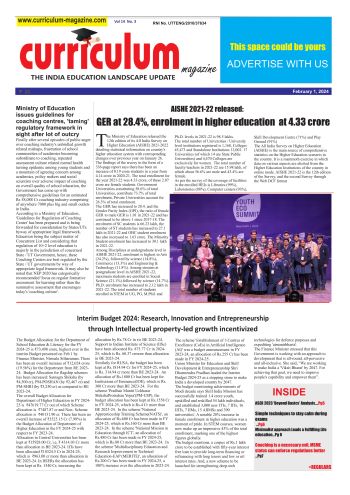Scientists of the EPTA in collaboration with the Indo-Japanese colleagues of the InPTA have reported detailed results of analysing pulsar data collected over 25 years with six of the world’s largest radio telescopes. This includes more than three years of very sensitive data collected using the unique low radio frequency range and the flexibility of India’s largest radio telescope – the uGMRT. The analysis of this unique data set has revealed that the measured rate of ticking of these cosmic clocks has characteristic irregularities, common across the twenty-five pulsars that have been monitored. This is consistent with the effect produced by gravitational waves at ultra-low frequency (waves that oscillate with periods between one and ten years).
Not surprisingly, nano-hertz frequency gravitational waves carry information about some of the best-kept secrets of the Universe. The cosmic population of black hole pairs with masses that are ten-to-hundred crores times more than the mass of our Sun are expected to be formed when their parent galaxies merge and such a population emits gravitational waves at these frequencies. Further, various other phenomena that may have taken place when the Universe was in its infancy, just a few seconds old, also produce these waves at these astronomically long wavelengths.
 According to Prof. A. Gopakumar, TIFR, Mumbai, and Chair of the InPTA consortium, “The results presented mark the beginning of a new journey into the Universe to unveil some of these mysteries. More importantly, this is the first time that an Indian telescope’s data is used for hunting gravitational waves.”
According to Prof. A. Gopakumar, TIFR, Mumbai, and Chair of the InPTA consortium, “The results presented mark the beginning of a new journey into the Universe to unveil some of these mysteries. More importantly, this is the first time that an Indian telescope’s data is used for hunting gravitational waves.”
To detect these gravitational-wave signals, astronomers in a ‘Pulsar Timing Array’ (PTA) collaboration exploit many ultra stable pulsar clocks, distributed across our Milky Way galaxy, to create a ‘galactic-scale gravitational-wave detector.’ Measurements of the exact arrival times of the pulsars, which have been going on for decades, are being compared with each other to study the influence of gravitational waves. As radio signals travel through space and time, the presence of gravitational waves affects their path in a characteristic way: some pulses will arrive a little (less than a millionth of a second) later, some a little earlier.
This gigantic galactic-size GW detector synthesised by incorporating 25 meticulously chosen pulsars in our Milky Way Galaxy makes it possible to access the variations in the pulse arrival times created by gravitational waves with a frequency of oscillation 10 billion times slower than those first observed in 2015 by the two ground-based LIGO detectors in the United States of America.
Prof. A. Gopakumar added, “Interestingly, kilometer-sized LIGO sees flashing gravitational wave signals that last for seconds. In contrast, our galaxy-sized PTA is beginning to sense a permanent vibration of the fabric of our universe or in other words a gravitational wave background at nano-hertz frequencies. The resulting new window to the universe is expected to get wider with new telescopes like the Square Kilometre Array (SKA) in the near future where India is expected to play a decisive role.”
The current results are based on a coordinated observing campaign using the five largest radio telescopes in Europe: the 100-m Effelsberg radio telescope in Germany, the Lovell Telescope of the Jodrell Bank Observatory in the United Kingdom, the Nancay Radio Telescope in France, the Sardinia Radio Telescope in Italy and the Westerbork Synthesis Radio Telescope in the Netherlands. To complement this data set, observations with the upgraded Giant Metrewave Radio Telescope in India were included in the analysis. Once a month, the European telescopes are additionally added together to give an extra boost to the sensitivity.
The analysis of the European and Indian Pulsar Timing Array (EPTA+InPTA) data which is presented today has revealed the presence of a common signal across the pulsars in the array which is broadly in agreement with being due to gravitational waves.
“The signal is persistent throughout the many years of monitoring of these pulsars, as if these cosmic clocks are pitching and rolling in the waves of space-time. This emerging evidence is in line with what astrophysicists expect,” said Prof. Keitaro Takahashi, Kumamoto University, Japan, who leads Japanese efforts with his Indian and European colleagues.
The EPTA+ InPTA results are complemented by the coordinated publications made by other PTAs across the world, namely the Australian (PPTA), Chinese (CPTA) and North-American (NANOGrav) pulsar timing array collaborations. This same evidence for gravitational waves is seen by NANOGrav and consistent with results reported by the CPTA and PPTA.
From India, the InPTA experiment involves researchers from NCRA (Pune), TIFR (Mumbai), IIT (Roorkee), IISER (Bhopal), IIT (Hyderabad), IMSc (Chennai) and RRI (Bengaluru) along with their colleagues from Kumamoto University, Japan.
Highlighting the importance of this research, Dr. Mayuresh Surnis, Assistant Professor, Department of Physics, IISER Bhopal, part of an International team of astronomers from India, Japan and Europe that has published the results from ‘Monitoring Pulsars,’ nature’s best clocks said, “We have been looking for these signals for many years. The hard work and dedication of so many colleagues around the world are finally bearing fruit! We are very excited to present this discovery to the world.”
The Research Team utilized six of the world’s most sensitive radio telescopes, including India’s largest telescope ‘uGMRT.’ These results provide a hint of evidence for the relentless vibrations of the fabric of the universe, caused by ultra-low frequency gravitational waves.
Such waves are expected to originate from a large number of dancing monster black hole pairs, crores of times heavier than the Sun. The team’s results are a crucial milestone in opening a new, astrophysically-rich window in the gravitational wave spectrum.
Such dancing monster Black Hole pairs, expected to lurk in the centers of colliding galaxies, create ripples in the fabric of cosmos. Astronomers call them ‘Nano-hertz gravitational waves’ as their wavelengths can be many lakhs of crores of kilometers.
The relentless cacophony of gravitational waves from a large number of supermassive black hole pairs create a persistent humming of universe. The team, consisting of members of European Pulsar Timing Array (EPTA) and Indian Pulsar Timing Array (InPTA) consortia, published their results in two papers in the Astronomy and Astrophysics journal. Their results hint at the presence of such gravitational waves in their data set.
These light-year-scale ripples can only be detected by synthesizing a galactic-scale gravitational-wave detector using pulsars-the only accessible celestial clocks for the humans. Pulsars are a type of rapidly rotating neutron stars that are essentially embers of dead stars, present in our galaxy. Fortunately, a pulsar is a cosmic lighthouse as it emits radio beams that flashes by the Earth regularly just like a lighthouse near a harbor.












